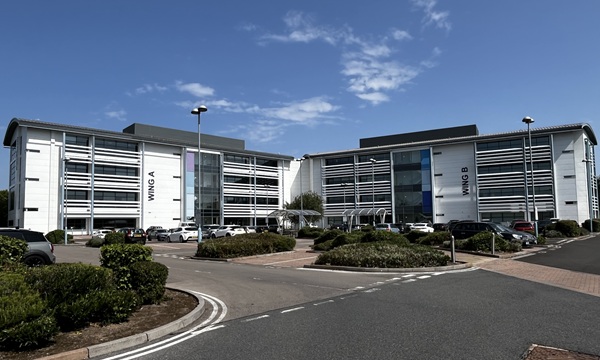
GUEST COLUMN:
Philip Jardine
Partner
Blake Morgan LLP

Cardiff is the engine of the Welsh economy. Its growth, ambition and vitality ripple far beyond the city limits, shaping opportunity and prosperity across the nation.
What happens here matters everywhere. That’s why the challenges facing Cardiff’s property market should concern us all, as should the opportunities that lie within our grasp, if we are bold enough to seize them.
Let’s start by recognising the progress that’s already been made. Over the past few years, despite economic headwinds and systemic hurdles, Cardiff has delivered real momentum in transport infrastructure, urban redevelopment and commercial growth.
While long-awaited, the Welsh Government’s support for Cardiff Parkway at St Mellons is a hugely welcome step. A project of this scale has the potential to transform regional connectivity and unlock growth in one of the city’s most strategically important areas. The sooner it is delivered, the sooner we will see its benefits.
The ongoing development of the Cardiff Crossrail and the metro links to Cardiff Bay are also critical to building a better-connected city that works for all its communities. But to be truly transformational, delivery needs to accelerate. And while we're thinking big, let’s also think local: doubling services on the City Line between Radyr and Coryton could make a real difference to daily life for many residents.
We’ve also seen visible improvements in central Cardiff, with the reopening of the canal at Churchill Way a clear sign of how creative, well-planned investment can breathe new life into neglected areas. Yet Queen Street — once the beating heart of retail in the capital — still cries out for bold reinvention. A thriving high street is more than a shopping destination; it signals a city’s confidence and civic pride. We should reimagine it as an urban village — a place to live, work, study and socialise — and act quickly to prevent further decline.
The early phases of Capital Quay at the waterfront represent another promising step. But broader connectivity and infrastructure remain key. Cardiff Central needs sustained investment to complete long-promised upgrades, open the Goldbeck-developed multi-storey car park, and deliver a footbridge that more seamlessly connects the station to the city's fabric.
All of this progress deserves recognition. But if Cardiff is to realise its full potential, we must confront some structural barriers holding it back, along with Wales more broadly.
The economic challenges are significant. High inflation, rising interest rates, and the increasing cost of materials have made construction more expensive and less predictable. Contractors are navigating a complex landscape of supply chain delays, workforce shortages, and a cautious investment climate. These factors make development harder to deliver and more expensive to finance.
The planning system also presents a real bottleneck. Across Wales, local authorities face severe resourcing challenges, with too few qualified planners and an overwhelming volume of applications. For a country the size of Birmingham or Manchester, there is a clear case for a more streamlined and centralised approach. Consolidating planning authorities could deliver the scale and capability needed to ensure projects progress swiftly and with certainty.
There is also a pressing need to shift the mindset around development. Instead of seeking reasons to delay or deny, the system should begin with a presumption favouring sustainable, strategic growth. Development is not a threat — it’s a driver of economic opportunity, job creation, and social renewal.
Housing must remain a priority. The Welsh Government’s commitment in 2021 to deliver 25,000 affordable homes by 2026 was ambitious and commendable. But delivery must now accelerate to meet growing demand. Expanding Help-to-Buy and shared ownership schemes could give young people a foothold in the market and help tackle the affordability crisis head-on.
We also need a more diverse housing mix. Too often, high-rise apartments dominate city centre development. There is space and demand for homes that support families, key workers, and long-term community stability. Repurposing underutilised retail zones — such as Queen Street — into mixed-use neighbourhoods is one way to achieve that.
Cardiff’s role as a student city must also be seen as a strength. International students bring investment, skills and vitality to our economy. Welcoming them is an economic opportunity and a chance to position Wales as a global destination for learning and innovation.
Across all of this, partnerships will be key. From public-private collaborations on major projects, to bringing civic institutions — like county halls — back into town and city centres, we must align investment, infrastructure and intent. Every successful development creates supply chain opportunities, boosts employment, and supports the skills agenda.
Better transport is essential. That includes rail and bus improvements and rethinking how we manage car travel by integrating more park-and-ride options and incentivising cleaner, more accessible alternatives.
Above all, we need urgency. The cost of delay is more than financial; it’s social and political. Inaction breeds frustration, but momentum builds confidence. Cardiff has the assets, ambition, and strategic position to lead Wales into a new era of growth and renewal. Let’s not waste the opportunity.














